You Can Take the Girl Out of the Hub…But You Cannot
Take the Hub Out of the Girl!
By Sandy Evans

This week Mom and I were having a conversation about her life growing up in the Hub…Glace Bay, Nova Scotia. I wanted to capture as many memories as I can before she gets too old to remember. After all, she’s 86 years old!
So, this blog is a memory of mom’s and the many trips taken after they married in Glace Bay, when dad ‘Took the Girl Out of the Hub’ and began married life in Massachusetts.

PHOTO: Dad & Mom 1952
August 9, 1952, Audrey Milley and Joseph Evans got married in Glace Bay, Nova Scotia. Fresh out of the Navy, dad decided that life with his ‘sweet Audrey‘ (that’s what he called her) would be like Heaven. They went on and raise five children in Franklin, Massachusetts. Every year, dad made sure mom and the kids got to see our Canadian grandparents.
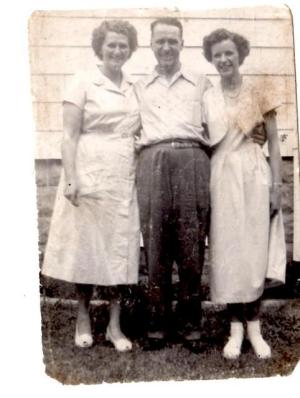
Photo: Mom and her Parents
Mom recalled a familiar memory, something that dad was ‘famous’ for…spirit of the moment trips! One Friday she got a phone call from Dad on his lunch break. He said he would be home by 3pm and to have the bags packed, and the kids ready to go! They were headed to Nova Scotia. Mom would scurry and pack clothes into suitcases, pack the cooler with peanut butter and jelly and a loaf of bread, and get out the Coleman stove! By 3 o’clock everything was ready and when dad pulled into the yard, we all jumped into the Rambler!

It was a 14-hour drive to Nova Scotia, and we would stay overnight around the Calais, Maine area or even Fredericton, New Brunswick. When dad’s eyelids began to droop it was time to stop!
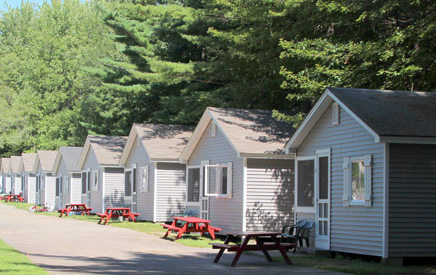
The next morning we’d be back on the road again, stopping in Moncton for a stretch, and then onto Amherst. We’d always stop at the Amherst Visitor’s Center and hear the bagpiper play the pipes and run through the gardens. As a small child, this was one of my favorite stops along the way!

We’d continued traveling…arriving in St. Peter’s. It was a tradition to stop at the Cozy Corner and call grandma and grandpa. This was 90 miles from the Hub and meant we were only an hour and a half away.
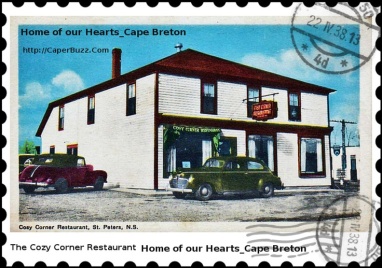
We always had a great time visiting the grandparents, cousins, aunts and uncles. We’d stay with Uncle Earl & Aunt Omni. It was fun to play games and hang out with our cousins: Linda, Wendy & Jimmy. Grandpa took us places around town – the wharf, the coal mine where my uncles worked.

We’d walk to the corner store and buy Yum Yum Potato Chips, Coffee Crisps for mom, 4 Flavours chocolate bars for dad, Sussex Pop, and Iron Brew soda for grandpa!
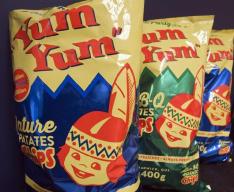


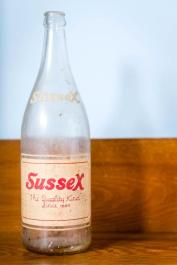 (I don’t think you can buy this pop anymore!)
(I don’t think you can buy this pop anymore!) 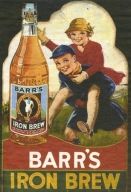 Grandpa’s Favorite Soda!!
Grandpa’s Favorite Soda!!
So many wonderful memories!
Thank you for letting me share with you!
________________________________________________________
Mary Maxim Sweaters & My Grandmother Milley
By Sandy Evans
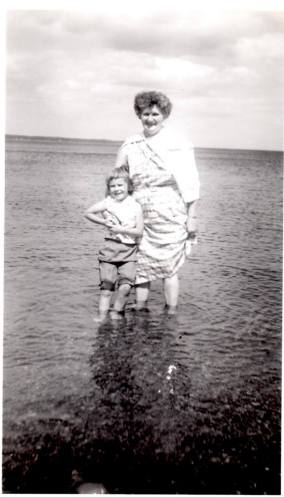
Oh, my goodness…today I woke up thinking about my grandmother, Mae Milley! I have begun knitting hats, blankets, and sweaters for my new grandchild who will make his/her grand entrance sometime in July 2019. My mind immediately took me back 60 years ago to my grandmother who knitted Mary Maxim sweaters for her grandchildren.
This classic Canadian sweater had a rounded collar, a zippered front closure and the iconic animals on the front and back. My sweater was red with white rabbits. It was my favorite sweater, not only because my grandmother hand knitted it just for me, but because it was warm, and I felt very special in it! Any child would feel special in a Mary Maxim sweater…just look at the happy faces on these 2 children!

I know my brother Gordon had a sweater with Toy Soldiers on it, like the pattern photo below: I don’t remember the color of his sweater.
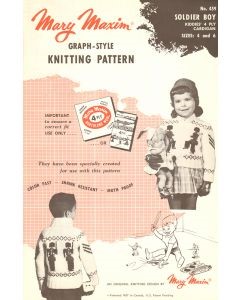
And my brother Bill had cowboys – like this one:
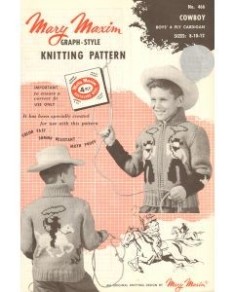
So, this morning, I Googled Mary Maxim to see if there were any patterns and yarns. I knew I would not find anything like that in Loxley, Alabama, so I am prepared to purchase the pattern and yarns on line. Sure enough….they have a ‘Vintage’ section and I found what I’m looking for! I will place my order and begin my journey of knitting in my grandmother’s footsteps! I hope I have her talent and can follow a pattern! For those of you who know me…I NEVER follow patterns!
I have decided to knit the puppy sweater:

I like the blue…but haven’t decided on the main color yet…maybe red, or green? Looks so cute, and maybe it will look like the photo when completed! I’ll have to keep you updated on that as I go!
Grandma, when you’re looking down from Heaven I hope I’m making you proud with my handiwork!
Love you!
_______________________________________________________________________
A Mother’s Day Tribute to Our Fantastic Grandmother’s Of Yesteryear!
By Sandy Evans
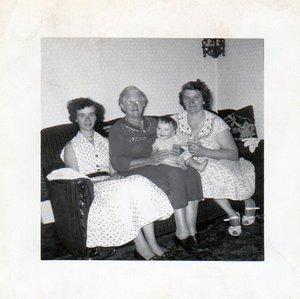
Photo: 4 Generation Photo 1955- Me (Sandra Evans), Mom (Audrey Milley Evans), Grandma (Roseanna Mae Kinslow Milley) and Great-Grandma (Lila Simmons Kinslow)
My blog today will honor the grandmother’s and great-grandmothers of yesteryear. These women were the foundations upon which our mothers learned nurturing, it is their examples that we have experienced in our upbringing and shape our lives today. As a family history researcher, I have noticed certain traits, trends, and customs in my great-grandmother’s, my grandmother and my own mother that have been passed down from generation to generation. It is these generational trends I will highlight today.
Strength & Courage
This trait has been found in several generations throughout my family tree. My earliest grandmothers who immigrated to the New World, which includes Nova Scotia, Quebec, and the United States, had no idea what lied ahead of them, or what would be required of them, but they knew they would survive, have children, and create a legacy that lives on today.
This list of great-grandmothers below instilled the strength and courage we see today in the women of our family.
(10th gg) Francoise Brunet – age 28 / the year 1663 – she married Martin Durand
(9th gg) Francoise Durand/ Gabriel Samson
Gabriel Samson/ (8th gg) Jeanne Martin
Matthieu Samson / (7th gg) Marguerite Pouget
Pierre Samson / (6th gg) Marguerite Landry
Benjamin Samson/ (5th gg) Marie Madeleine Maillet
Benjamin Samson / (4th gg) Colombe Boucher
(3rd gg) Catherine Ann Samson / Henry Campbell
(2nd gg) Catherine Campbell / George Henry Simmons
(great-grandmother) Henrietta Louise Elizabeth ‘Lila’ Simmons / Ernest Albert Kinslow
(grandmother) Roseanna Mae Kinslow/ William George Milley
Audrey Agnes Milley / Joseph William Evans
Sandra Evans
Francoise Brunet, my 10th great-grandmother, is the earliest known woman in my ancestral tree that settled in Nova Scotia. Her journey across the Atlantic Ocean took months and arriving in a vast new world of hardship and unknown adventures, makes her one of the strongest women I would love to know more about.
Nurturing & Caring
Let’s face it…the women make the heart of the home. Having children, raising children to be responsible adults, and instilling a work ethic is a trait that has been passed down from generation to generation in my family. This family has always worked hard for a living. My Uncles and Grandfathers were coal miners. My Aunts and Grandmothers not only took care of their men, but made sure their children were fed, clothed, and their homes happy and clean. These women not only took care of their immediate families, but they helped their neighbors out too. They were a vital part of their communities. Making quilts, working in their churches, providing comfort to the ill, and going without if someone else had a greater need. There are numerous stories of Uncles giving hungry babies milk and paying for it, or aunts taking care of neighbor kids while the parents were away (for free). These ethical traits don’t just happen, they are shown to the children through the deed and examples of the parent. There are many examples, such as these, that I am discovering as I unmask some of the stories of great-grandmothers.
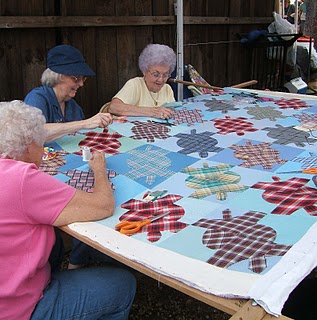
(Photo: Example of Grannies Quilting)
1663 is the first year on record for the ‘founding mothers’ of Nova Scotia and Newfoundland, followed by my Irish ancestors, who begin to appear in 1863 with the Kinslow family, and my Scottish ancestors around 1880, with the Bonnar family. Also, during this time-frame, in 1736, my German ancestors were making their way to Pennsylvania from Rotterdam. These ancestors formed the Evans side of the family tree.
Wow! Being able to go back to the year 1663 and come forward to the year 2018, still blows me away at times! Looking at the life-styles back then and what conveniences we have now-a-days makes me grateful for the endurance and guts these early women had!
355 years later, the women of this family evolved into independent, strong women, and still pioneering to new places: My daughter, strong, independent, caring woman, is a leader in her career as a paramedic. Everyday putting her life on the line to save those in need; my mother at the age of 86, doesn’t slow down, travels, staying active in her religion, is in excellent health and has expanded her legacy to include 5 children, 18 grandchildren and 32 great-grandchildren; my nieces are independent business women – one in Peru is a coffee baron, one in California is a dance instructor, one in Utah is a personal trainer, another works as a hospitality specialist for a prominent hotel. Cousins that are lawyers, professors, school principals, and more.
It all began way back when courageous, strong women decided to come to Canada and create this amazing legacy!
HAPPY MOTHER’S DAY!

(Photo: Mom & Ivan 2017)
___________________________________________________
Early Acadian Family – The Theriot’s 1637
By Sandy Evans
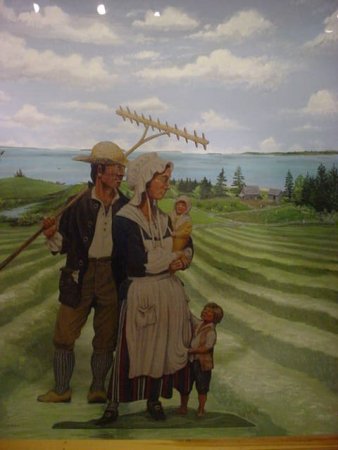
(Photo: http://www.edu.pe.ca)
Today I want to write about an ancient Acadian family the Jean Theriot family of 1637 – Port Royal. As with any intrigue or mystery…. this family has one that has yet to be figured out! I am writing about these ancestors because they are part of my ancestral tree – actually my 11th great grandfather and great grandmother. I will draw the pedigree line to them in the end, but for now…. Let’s begin the story.
The year is 1637 France
Jean & Perrine board a passage to the New World and to begin a new life. Having been married since 1636 in Pictou France, and Perrine expecting her first child the couple arrive at Port Royal. Now, the first controversy – Was Perinne expecting when she arrived in Port Royal? History is a good indicator of how things usually go when there are no paper records to back up the facts…in this case there is a census that appears a few years later (1671) listing the children and their ages of Jean & Perrine. Their oldest son Claude was born in 1637 at Port Royal. So…my suspicion is Perrine was expecting when they left France and arrived at Port Royal in 1637. Which makes sense because newlyweds usually have their first baby the year after marriage, although I am sure the voyage across the sea was not an enjoyable one for my 11th great grandmother!
So, from this point moving forward the Theriot family is a founding family at Port Royal and Jean & Perrine end up having 7 children, including my 10th great grandfather Bonaventure Theriot. Jean’s occupation is Laborer, probably farming.

(Photo: http://www.acadia.org)
Intrigue #2
Intrigue #2 comes from the following:
1.Nova Scotia, Canada. Recensements d’Acadie (1671 – 1752), pg. 5. Recensement 1671, Port Royal, Acadie “Laboureur – JEHAN TERRIAU aagé de soixante et dix ans, sa femme Perrine Rau aagée de soixante ans. Leurs enfans sept. Ceux qui sont mariez, Claude Terriau, agé 34, Jehan aagé de 32 ans, Bonaventure aagé de 30 ans, Germain 25 ans, Jeanne aagée de 27 ans, Catherine aagée de vingt et un an, Le non marié Pierre agé de seize ans. Leurs bestiaux a cornes six et une brebis, terres labourables cinq arpans.”
- Alternate source and notes:
NAME: Her name is sometimes given by researchers as RAU, or REAU, RUAU, BREAU, even BEAU, but the only existing record giving her name is the first census of Port Royal, Acadia in 1671. There are two versions of this document, in two different handwritings, both apparently done near the same time. One is found in France, the other is in the Canadian archives. - Arsenault, Bona. Histoire et généalogie des Acadiens. (Quebec: Le Conseil de la Vie française en Amérique, 1965), p. 804. (Port Royal, husband’s entry); Listed as Perrine BOURG [sic], wife of Jean TERRIAU. No separate listing for her as an individual under BOURG. Jean was “without doubt” originally from Martaize (a footnote cites Genevieve Massignon, LES PARLERS FRANCOIS D’ACADIE, vol. 1, p. 49), in the Loudun region, department of Vienne, France. They married around 1635, arrived in Acadia around 1637. First child listed was born in 1637.
- Bergeron, Adrien. Le grand arrangement des Acadiens au Québec: notes de petite-histoire, généalogies, France-Acadie-Québec de 1625 à 1925. (Montréal, Canada: Editions Elysée, 1981), vol. 8; p. 49. Name spelled Perrine RUAU, born 1611. But on p. 43, says that Jean TERRIAU married Perrine BOURG [sic] (Reference: Coll. de manuscrits: I/83).
Ah…there was a reason I left Perrine’s last name off when I began this blog. There seems to be a question as to what her last name really is! According to the 1671 census her last name is RAU. So, what is it and Is it vital to my story? There are ‘Truest’ out there that say, ‘If there is no proof then it doesn’t exist’ or ‘You can’t use that information’ yet these same people will use the word ‘about’ or ‘between’ when stating their family histories. What’s the difference? Is it not still an educated guess based on history or probabilities?
Here’s my theory about the last name of Perrine: 1st – old records were handwritten and left up to the guy writing on how to spell the last name. 2nd– Verbally telling someone your last name and them writing ‘what they heard’ is interruption…interruption can be wrong – as evident by the spelling of the last name Theriot in the census sample above. In Perrine’s case as you can also see above, the last name goes from RAU to BEAU and if you speak BEAU it could sound like BOURG.
So, what am I to do about this? Not a thing…maybe a little more research…

(Photo: http://www.communitywalk.com)
That’s exactly what I did and here’s what I found: Resource http://www.terriau.org/notes.htm
“In the 1671 Census of Acadia [ref: 4], Perrine’s maiden name is recorded as ‘Rau’ or ‘Reau’. In other records, her maiden name is recorded as Ruau, Bau, Beau, or Breau. No records exist of the identity of her parents. So, much speculation exists today as to Perrine’s real maiden name. But it is very clear that in the 1671 Cenus of Acadia, her name is recorded as ‘Rau’ or ‘Reau’ depending on the interpretation of the letters ‘e’ and ‘a’. So, for the record-keepers and genealogists, there is no controversy as to the record. But for others who are interested in determining the history of the Theriault family, there are several questions. First, is there a chance that her name was not correctly recorded? The answer to that is of course there is a very good chance that her name was not correctly recorded. The principle fact that brings that name into question is that there is no knowledge of the ‘Reau’ or ‘Rau’ family every having lived in the ancient province of Poitou. Census-takers, immigration officials, cartographers have notoriously misrecorded names either through lack of written information, ignorance or cultural or language differences. Some of the more notorious examples are reflected in the Ellis Island records of US immigrants as recently as 1920. A quick review of almost any of the US censuses will reveal many very obvious errors in spellings. In this controversy, the researchers are divided into three groups: (1) those who will either not speculate or who believe that the census-taker correctly recorded her maiden name; (2) those who believe that Perrine’s last name was incorrectly recorded and was actually Brault or some variant, and (3) those who believe that Perrine’s last name was incorrectly recorded and was actually Bourg or some variant. Arsenault asserts that Bourg is the correct choice, while Lanctot chooses Breau. Unfortunately, neither support their claims. Steven White in his new work “DICTIONNAIRE GÉNÉALOGIQUE DES FAMILLES ACADIENNES”, does not identify Perrine’s parents and correctly reflects the record of the Census of 1671. It should be noted that while some published records including the Linda Dubé and Father Cyr genealogies record Antoine Bourg and Antoinette Landry as the father and mother, respectively, of Perrine, there is no established record which supports this claim. So, all claims regarding Perrine’s maiden name remain hypothetical. The only fact pertaining to Perrine’s maiden name is that the Census of 1671 identifies that name as being ‘Reau’ or ‘Rau’. That is not to say, that her maiden name was actually ‘Reau (Rau)’, it simply says that the census-taker understood and recorded her name as Perrine Reau (Rau).If we take a look at the names of the families at that time in Martaisé, La Chaussée and Aulnay, we find that the Bourg name is well established as is also ‘Brault’ but there is no evidence of the ‘Reau’, ‘Rau’ ‘Ruau’ ‘Bau’, ‘Beau’, ‘Breau’, ‘Beaux’, or ‘Breaux’ families during that time period. Here is what Madame Genevieve Massignon had to say about the parochial records of the parish of La (Grande) Chaussée in the ancient province of Poitou, France (I translate from Bona Arsenault’s account) :”More than half of the records from 1626 to 1650 concern the names of families which we find among the families listed in the 1671 Census of Acadia: Babin, Belliveau, Bertrand, Bour, Brault (in the feminine Braude), Brun…” She continues “The names of Blanchard, Bourg, Brault, Giroire, Godet, Guerin, Poirier, Terriot were among the tenants of the mother of Charles d’Aulnay.” It should also be noted that the ‘Ruau’ family does exist today in the Loire region of France as does the ‘Reau’ family but not in the area where the ‘Terriot’s’ are said to have come from. As far as we know, the only instance in which this name shows up in any of the Acadian records and history is in the first Acadian census. For these reasons, we believe that Perrine’s maiden name was misunderstood and incorrectly recorded in the Census of 1671. And, since no definitive evidence is available to resolve this ambiguity, we have chosen to side with the ‘Brault’ advocates simply because the Acadian Census of 1671 gives her last name as Reau or Rau whose pronunciation is phonetically closer to Brault than to Bourg.
So, as the mystery still surrounds this great family…. I’ll leave it up to you the reader to figure out this Acadian Mystery! For me…Perrine will always be my 11th great grandmother!
Here’s the pedigree:
Jean & Perrine (RAU or BOURG)Theriot – Bonaventure & Jeanne (Boudrot) Theriot – Claude & Marie (Theriot) Gauterot – Jean Baptiste & Marie Marguerite (Gauterot) Landry – Joseph & Marie Marguerite (Breau) Landry – Pierre & Marguerite (Landry) Samson – Benjamin & Marie Madeleine (Maillet) Samson – Benjamin & Colombe (Boucher) Samson – Catherine Ann (Samson) & Henry Campbell – George Henry & Catherine (Campbell) Simmons – Ernest Albert & Henrietta (Simmons) Kinslow – Roseanna Mae (Kinslow) & William George Milley – Audrey (Milley) & Joseph Evans [my parents].
_________________________________________________________________
Connecting Acadian Families to The Milley Family
By Sandy Evans
Annapolis Royal – 1609
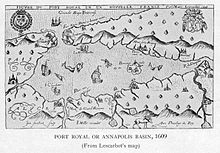
We begin our journey in the year is 1632, the place is Annapolis Royal (Port Royal) on the Annapolis Basin, Nova Scotia, Canada. This became the home of many Acadians after the destruction of previous habitat’s from 1605, and was established as ‘Acadia’ a French colony.

(Photo: Port Royal 1612)
The ancestral line I am tracking is the Michel Boudrot line to Audrey Milley (my mother). This is the direct line to this ancient ancestor of 1639.
September 21, 1639 Michel Boudrot was present at a baptism in Port Royal, according to several verified sources and histories on Michel Boudrot. That places him as one of the first French Acadians in Nova Scotia, and the starting point of this blog.
Here’s the Pedigree Chart
Michel Boudrot / Michelle Aucoin –> Jeanne Boudrot / Bonaventure Theriot –> Marie Theriot / Claude Gauterot –> Marie Madeline Gauterot/ Jean Baptiste Landry –> Joseph Landry / Marie Marguerite Breau –> Marguerite Landry / Pierre Samson –>Benjamin Samson (I) / Marie Madeleine Maillet –> Benjamin Samson (II) / Colombe Boucher –> Catherine Ann Samson (I named my daughter after this grandmother) / Henry Campbell –> Catherine Campbell / George Henry Simmons –> Henrietta Louise Elizabeth ‘Lila’ Simmons / Ernest Albert Kinslow –> Roseanna Mae Kinslow / William George Milley –> Audrey Agnes Milley (my mother) / Joseph William Evans (my father).
When researching your genealogy for this time period you may come across words such as: Annapolis royal, Port Royal, or Acadia – it all means the same place and it is common to call this place Port Royal. This was a gathering point (starting point) for French ancestors coming to this land, until about the 1680’s when they began to spread out to surrounding areas such as Pisiguit, Cobequid, Grand Pre, and Beaubassin and settle these outlaying areas. Today it is called Port Royal.
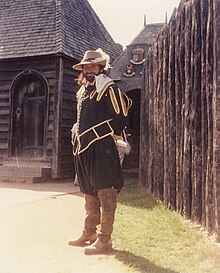
(Photo: Typical 17th century look at Port Royal)
NOTE: The Boudot family suffered during the expulsion of Acadians in 1755. Many lost their lives, many were sent south to Louisiana, some were in the Civil War (Numa Boudrot [Boudreaux] was a private in the war from Assumption Parish and was wounded at Vicksburg and taken prisoner).
___________________________________________
Acadian Exile & Deportation 1755-1759
By Sandy Evans
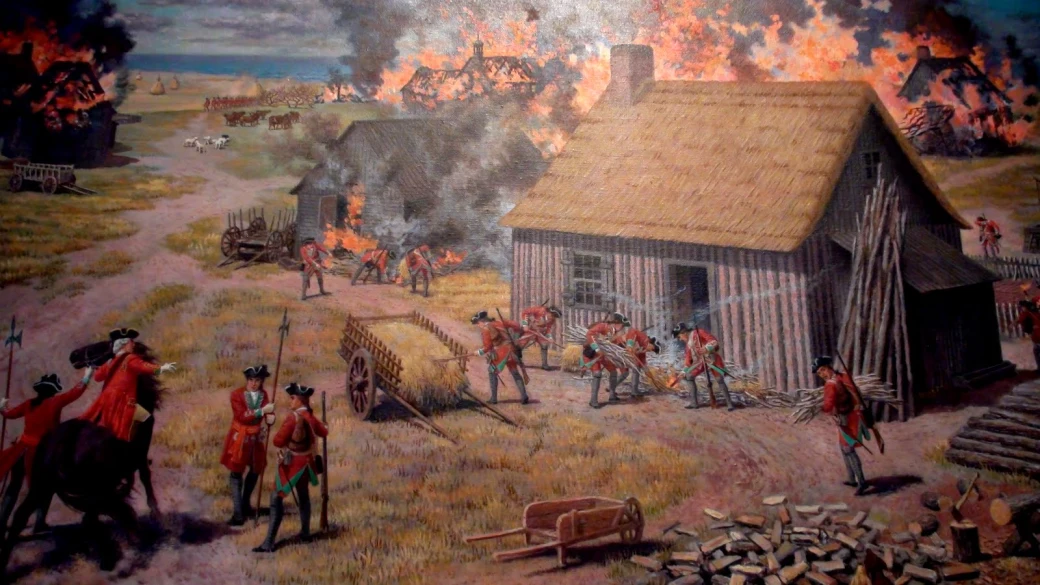
(PHOTO: Liz Anders)
Most of the following is from Dudley LeBlanc’s book The Acadian Miracle, the rest is from the internet. My ancestors were affected by the deportation, exile, death and destruction of their families and belongings. I feel it is vital to tell their story in this blog. As I was researching my family history, back in 1980, I noticed several families were ‘lost at sea’. This seemed strange to me that parts of a family would be lost and others would go on. I think I just told myself they died of sickness or something…never really understanding what happened to them until recently. Then I came across a copy of Dudley LeBlanc’s book and my understanding grew. It was like being in a time-machine…looking back in history to the 1750’s. I immediately fell in love with these people! As we continue with blogging and researching family history, I will connect for you where these ancestors fall on the Family Tree, but for now…here is their story:
Acadian Exile & Deportation
The deportation and Exile of the Acadian people in Nova Scotia took several years as a coordinated event on the part of the British and involved several ships. Even with the 1713 Treaty of Utrech in which the Acadian people thought they were safe when France relinquished the settlements over to Britain, the Acadian people didn’t realize what was coming their way. The physical plan of action began on August 18th when Colonel Winslow arrives in Beausejour with his 313 men and the set-up tents and took over the church in the public square, but this horrible deed was mentally planned well before 1721 (Dudley LeBlanc).
August 9, 1755 – Fort Beausejour 400 Acadians made prisioners. Women and children rushed the ships to join their husbands, and some were beaten and 12 died.
August 30, 1755 – 3 Boats arrive in the Gasperau River area. Endeavor, Industry, Mary. I will list their names here as they arrive so that you the reader will be able to see what ancestors were put on what ship. That will come a bit later in this blog.
August 31, 1755 – Neptune arrives in Piziquid.
September 5th, 1755 – Grand Pre (Includes resident from Grand Pre, Minas Basin, River Canards) all residents were order by the blood-thirsty butcher, Colonel Winslow, to appear at the public center at 3pm.
411 Acadian boys, men, seniors. Here’s an account of that day as stated in the Canadian Encyclopedia:
“On Friday, September 5, 1755 Colonel John Winslow ordered that all males aged 10 years and up in the area were to gather in the Grand-Pré Church for an important message from His Excellency, Charles Lawrence, the Lieutenant-Governor of Nova Scotia. The decree that was read to the assembled and stated in part: “That your Land & Tenements, Cattle of all Kinds and Livestock of all Sorts are forfeited to the Crown with all other your effects Savings your money and Household Goods, and you yourselves to be removed from this Province.”
It was a New Englander, Charles Morris, who devised the plan to surround the Acadian churches on a Sunday morning, capture as many men as possible, breach the dykes and burn the houses and crops. When the men refused to go, the soldiers threatened their families with bayonets. They went reluctantly, praying, singing and crying”.
Those who managed to escape were hunted down by the soldiers, and their families killed and homes destroyed.
September 10, 1755
Family members separated. 50 younger boys age 10-12, went on each of the five ships to lessen the danger of an uprising. The men followed until all were placed on ships, leaving the sick, women, and small children in the town. All their grains were burned with their farms, all the cattle and livestock was taken to Fort Edward (Dudley LeBlanc).
September 11, 1755
Several young men age 22, jumped overboard and swam to shore and hid in the woods. Colonel Winslow demanded their return in 2 days or he was going to begin executing his prisoners. The men surrendered to save their families (Dudley LeBlanc).
Total Deported at Grand Pre – 2,743. 446 Males age 10 – 12, 37 Prisioners from Halifax, 337 married Women, 576 Daughters, 820 old and infirmed, 527 sons under age 10.
Acadians Taken At Grand Pre (Dudley LeBlance)
(my ancestors are highlighted)
Alin, Apigne, Aucoin, Babin, Belmere, Belfontaine, Benois, Blanchard, Bobin, Boudro, Bourg, Boulet, Brassin, Braux, Brasseaux, Brune, Capiere, Caretter, Celestin, Commo, Clostre, Cote, Daigre. Duon, Dupuis, Doucet, Forrest, Gautro, Gotro, Granger, Hebert, LeBlanc, Landry, Laurent, LeBar, Lapierre, Leuron, LePrince, Massier, Melanson, Mangean, Munier, Noalid, Pitre, Quette, Richard, Robichaud, Robichoct, Rous, Sapin, Semer, Sonier, Sosonier, Terriot, Tibodo, Trahan, Vincent.
Port Royal 1,664 deported – Several British soldiers killed.
September 15, 1755
Colonel Winslow sent Captain Lewis to capture Cobequit. Lewis was too late, all the resident fled to Prince Edward Island. Lewis was furious and burned all the homes, but the fleeing resident had set fire to the Neptune which was anchored to take them as prisoners.
October 8th -27th, 1755
10 additional ships arrive in the Bay of Fundy to take the Acadians. Up until this time only the men and boys were put on ships. Women and children were now ordered to board ships. “The women were thrown in different boats from their husbands…”
October 27, 1755
First fleet of ships set sail carrying 4,000 Acadians in exile. Storms caused some of the ships to leak and were abandoned by the sailors. Most of the Acadians became seasick, others fell to diseases. Many died at sea and were thrown overboard to the sharks.
Here’s What Happened to the Vessels from October 27th.
Ranger went to Maryland – arrived November 30th
Dolphin went to South Carolina – arrived November 17th
Three Friends went to Virginia – arrived November 30th
Seaflower went to Pennsylvania – arrived November 19th
Hannah went to Boston – arrived November 15th
Leopard went to Pennsylvania – arrived November 19th
Elizabeth went to Maryland – arrived November 20th
Sally & Molly went to Maryland – not sure if it arrived
Mary went to Virginia – not sure if it arrived
Prosperous went to Virginia – not sure if it arrived
Endeavor went to South Carolina – arrived November 17th
Industry went to Virginia – not sure if it arrived
Swan went to Virginia – arrived January 21
Dove went to Connecticut – not sure if it arrived
Swallow went to Boston – not sure if it arrived
Race Horse went to Boston – not sure if it arrived
Cornwallis went to South Carolina – arrived November 17th
Two Brothers went to South Carolina – arrived November 17th
December 8, 1755 – 7 ships set sail from Port Royal
Here’s What Happened to the Vessels of December 8th
Pembroke was overtaken by the Acadians and went to St. John River
Helena went to Boston
Edward went to Connecticut
Two Sisters went to Connecticut
Experiment went to New York
Hopson went to South Carolina
Syren went to South Carolina
1756 – British Troops under Major Frye came to Chipoudy, Piticoudiac and Memramcouk to surprise the Acadians living there. Instead, an alarm was sounded and most men and women ran, some left their babies behind, Major Frye took the babies and their cries brought the mothers out of hiding. The women were flogged in hopes to bring the men out of hiding. The men borrowed guns from the Indians, and began shooting the soldiers. Major Frye grabbed 43 women and children and retreated burning 250 farms on his way.
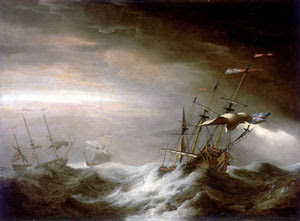
(PHOTO: Acadian Ancestral Home)
November 13, 1758 – Lost at Sea En Route to France
Duke William, with 300 French inhabitants on board, from the Island of St. John’s, North America, to sink about 35 Leagues from the Land’s End, Wednesday the 13th about 4 o’clock in the afternoon (Lucille LeBlanc)
March 29, 1759 – Lost at Sea En Route to France
The Ruby, bound for St. Malo’s France, with 310 of the Inhabitants of the Island of St. John on board, sprung a Leak in a Gale of Wind, and being in great Distress, the Captain made the best of his Way for the Western Islands, and thought to have got to Fyal; but the Wind shifting, they were obliged to stand for the Island of Pico, where the Ship struck on the Rocks, and soon went to Pieces, when 200 of the French perished. They had no Advice at Fyal of Commodore Keppel putting into Madeira, nor of his receiving any Damage at Sea (Lucille LeBlanc).
______________________________________________________
Filles du Roi – Daughters of the King 1663-1673
By Sandy Evans

(Photo: Jean Talon, Bishop François de Laval and several settlers welcome the King’s Daughters upon their arrival. Painting by Eleanor Fortescue-Brickdale)
Fille du Roi – Daughters of the King 1663-1673
The year is 1663 and Canada is beginning to be colonized. Louis XIV is Kind of France at this time. His objective is to get the new colony established with families. To accomplish this goal he offered single women of France an opportunity to travel to the New World and pick and choose for husbands the single men already here. To do this he gave each of the 800 women who signed up for the adventure received free passage, a dowry of 50 livres — the equivalent of roughly $1,000 today, a chest of clothes, shoes, gloves, sewing supplies, livestock to get them started in married life.
The ships landed in Quebec City, Trois-Rivieres, and Montreal. My ancestors settled in Quebec, Newfoundland and Nova Scotia, with Gabriel Samson settling in Quebec with Francoise Durand, daughter of Francoise Burnet.
What awaited these women was a harsh landscape, undiscovered and undeveloped lands that were to be their new homes, and a population of men who were hunters, trappers, farmers, fishermen, boat builders, soldiers, looking for wives.
(Photo: http://www.cbc.ca/2017/canadathestoryofus/most-french-canadians-are-descended-from-these-800-women-1.4029699)
Well, I did research on this topic and checked the list of women searching for ancestors who were part of this adventure and found Francoise Burnet – a direct ancestor to my mother – on the list.
Here is the breakdown of this adventurous, founding mother of Quebec and Nova Scotia:
(10th gg) Francoise Brunet – age 28 / the year 1663 – she married Martin Durand
(9th gg) Francoise Durand/ Gabriel Samson
Gabriel Samson/ (8th gg) Jeanne Martin
Matthieu Samson / (7th gg) Marguerite Pouget
Pierre Samson / (6th gg) Marguerite Landry
Benjamin Samson/ (5th gg) Marie Madeleine Maillet
Benjamin Samson / (4th gg) Colombe Boucher
(3rd gg) Catherine Ann Samson / Henry Campbell
(2nd gg) Catherine Campbell / George Henry Simmons
(great-grandmother) Henrietta Louise Elizabeth ‘Lila’ Simmons / Ernest Albert Kinslow
(grandmother) Roseanna Mae Kinslow/ William George Milley
Audrey Agnes Milley / Joseph William Evans
Sandra Evans
For more information on the Filles du Roi here’s the link to the American-French Genealogical Society http://www.afgs.org/Kings_Daughters_Anniversary.html
____________________________________________
Philippe Muis D’Entremont 1650’s
By Sandy Evans

[Photo: Philippe Muis D’Entremont. (Geni.com)]
Happy Sunday!
Today’s blog is on an ancient ancestor who played an important role during and after the expulsion time period of the Acadians. That ancestor is Philippe Mius D’Entremont.
The year is 1651…
King Louis XIV is king of France and England was undergoing a dramatic change with the death of King Charles I for treason, the exile of Charles II to France, and Oliver Cromwell leading the newly established Republican Commonwealth party.
The United Kingdom had endured 2 civil wars and was now in its’ 3rd civil war with Ireland and Scotland. Many Englishmen were sent to the colonies of America to establish a strong foothold for England and banishing and killing the Quakers that were already over there. Wars, lies, treaties, persecution, forcibly taking over properties and lands, were the norms of the 1650” s. It was no different for the Acadians’ of Nova Scotia, they were about to become involved in the craziness, and they were unprepared.
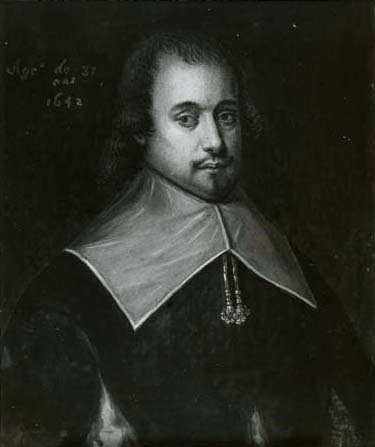 (Photo: Governor Aulnay)
(Photo: Governor Aulnay)
Daniel LaBlanc, in his book, speaks about Charles la Tour’s friendship, or lack of friendship, with the current governor of Acadia, Aulnay. Both men were listed as the first colonist in the New World. La Tour could no longer bear sharing half the authority with Aulnay and in 1650, with the mysterious and sudden death of Aulnay, La Tour becomes Governor of Acadia, and marries Alunay’s widow.
During this time England is expanding its’ holdings in America and Oliver Cromwell’s decision to drive the Quakers out of New England included driving the Acadian’s out too. The struggle for wealth, hunting, land grabbing, and power was about to be unleashed upon the Acadians’ at Port Royal.
So, what does this have to do with my ancestor Philippe Mius D’Entremont? Well, we know Philippe came to Acadia in the 1650’s at the request of La Tour, the new governor. He served as a Lieutenant-Major for Acadia. He was married to Madeline Helie and had five children.
In 1653, Philippe became the seigneurie of Pobomcoup, now Pubnico, near Cap-Sable, where Philippe and Madeleine settled for most of their time in Acadia; Philippe thus became the sieurd’Entremont, baron de Pobomcoup, lieutenant-major et commandant des troupes. His barony ran from Cap-Nèigre, northeast of Cap-Sable, around to Cap-Fourchu near present-day Yarmouth. He built his feudal house near the entry to the harbor at Pobomcoup. One biographer asserts: “D’Entremont played an important part in the colony’s history both because of what he did as an administrator and because he was one of the rare Acadian seigneurs to concern himself with cultivation and with clearing land; he attracted to his estate ‘several indentured workers and a few families from Port-Royal … and this seigneury eventually formed a small center of population.”
In 1670 the region was returned to France’s procession and Philippe became the King’s Attorney in Acadia. Philippe died in 1700 at the age of 99. Madeline had died earlier in 1679. Philippe and Madeline left their legacy on Acadia, not only in service to their countrymen, but through their children.

(Muis D’Entremont Family Crest)
Here is the breakdown of that legacy:
- Their older daughter Marie (my 9th great-grandmother) married into the Melanson dit LaVerdure family.
- Jacques Miusd’Entremont, sieur et baron de Pobomcoup, co-seigneur of Port-Royal and Acadia, born at Pobomcoup in c1658, married Anne, daughter of Charles La Tour and Jeanne Motin de Reux, Charles d’Aulnay’s widow, in c1678. Jacques and Anne had nine children, including four sons who married into the Amireau, d’Abbadie de Saint-Castin, Landry, Boudreaux, and Molaison Their five daughters married into the Dupont Duvivier, Dupont Duchambon, Landry, Boulais de Saillans, Pastour de Costebelle, Navailles de Labatut, and Lafitte families. Philippe Pastour de Costebelle was governor of Newfoundland when he married Jacque’s daughter Anne at Port-Dauphin, Newfoundland, in February 1716; she was age 22, and he was 55; she had married her first husband, Antoine de Boulais de Saillans, an ensign in the French troupes de la marine, when she was only 13 and, according to Acadian historian Father Clarence-J. d’Entremont, ” became … the youngest widow in the annals of Acadian, and even of Canada.” Anne remarried–her third marriage–to French baron Chevalier Laurent de Navailles de Labatut at St.-Eustache de Paris in France in August 1719. She lived at her husband’s family estate, the Château de Navailles-Labatut, which still stands near the village of Labutat-Figuières in the Béarn hills north of the Pyrenées, in the far southwest corner of France. She died at the château in October 1778, in her 80s, when her D’Entremont kinsmen were languishing far to the north at the port of Cherbourg, to which they had been deported 20 years earlier. Jacques died in 1735 or 1736 probably at Pobomcoup. His descendants used the surname Mius d’Entremont or D’Entremont.
- Abraham Mius, sieur de Pleinmarais, born at Pobomcoup in c1658, married Marguerite, another daughter of Charles La Tourand sister of his brother’s wife Anne, in c1676. They had nine children also. Four of their daughters married into the Bourgeois, Crépeau, Channitteau, and Landry None of Abraham’s three sons seems to have survived childhood, so this line of the family, except for its blood, did not continue. Abraham died in September 1704, in his mid-40s. His daughters used the surname Mius.
- Youngest son Philippe Mius D’Azy born at Pobomcoup in c1660, married first an Indian woman whose name has been lost to history, in c1678. Philippe also lived for a time at La Hève, up the coast from Cap-Sable. He and his first wife had five children, including a son who married into the Amireau dit Tourangeau family and settled at Port-Royal, and two sons who also married Indian women. One of those sons lived at Mouscoudabouet, now Musquodoboit Harbor near present-day Halifax. Philippe’s two daughters married into the Viger and Bonnevie dit Beaumont families. Philippe remarried to another Indian woman, Marie, in c1687. They had nine children, including five sons, four of whom married. One son married into the Lapierre The surnames of three of the other married sons’ wives have been lost, so they probably married Mi’kmaq women. Philippe and Marie’s four daughters married into the Thomas, Guédry dit Gravois, Grand-Claude, and Cellier dit Charêt families. Philippe, fils‘s descendants used the surname Mius d’Azy. Some of them left peninsula Acadia for Île St.-Jean, today’s Prince Edward Island, by the 1750s.
In 1755, descendants of Philippe Mius d’Entremont could be found at Annapolis Royal, on Île St.-Jean, and in France
(Sources: LeBlanc, D, (1966). The Acadian Miracle.
Cormier, S, (2007). Acadians in Gray. Retrieved from http://www.acadiansingray.com/Appendices-ATLAL-D%27ENTREMONT.htm)
Evans/Milley Connection: [10th Great-Grandfather}
Philippe Mius D’Entremont/Madeleine Helie –> Pierre Melanson / Marie Mius D’Entremont –> Jean Landry / Cedile Melanson –> Jean Baptiste Landry / Marie Marguerite Gauterot –> Joseph Landry/ Marie Marguerite Breau –> Pierre Samson / Marguerite Landry –> Benjamin Samson / Marie Madeleine Maillet –> Benjamin Samson / Colombe Boucher –> Catherine Ann Samson (my daughter is named after this grandmother)/ Henry Campbell –> George Henry Simmons / Catherine Campbell –> Ernest Albert Kinslow / Henrietta ‘Lila” Simmons –> William Milley / Roseanna Kinslow –> Joseph Evans / Audrey Evans
________________________________
Port Royal Acadians 1671
By Sandy Evans

Photo: Trail-blazing (cbc.ca)
Today’s blog is focused on the occupations of our Acadian ancestors who settled at Port Royal in the 1600’s.

Photo: Rendition of Port Royal Early Years. (Quazzo.com)
Short History of Port Royal
Port Royal (Annapolis), Nova Scotia was the landing place of the first Acadian and second permanent settlement in New France – about 1605 (LeBlanc, 1966). 120 settlers of all skills were among the landing party; Carpenters, Farmers, Gunsmiths, Boat Builders, Other Artisans, Druggists, and both Catholic Priest and Huguenot Ministers. By the year 1606, new settlers were arriving at Port Royal from France. Louis Hebert, the son of Catherine de Medici’s druggist was among this second group. Assisted by the Mi’kmaq Indians who were living in this area, the settlers thrived and survived (LeBlanc, 1966).
Here is the list of my ancestors at Port Royal in 1671 and their occupations:
These Port Royal ancestors are in my family tree. The information is from Dudley LeBlanc’s book The Acadian Miracle (1966) and based on the 1671 census that is today housed in the archives in Paris.
Babin, Antoine and his wife Marie Mercie and their 5 children. Antoine has no listed occupation, he does have 6 heads of cattle and 8 heads of sheep.
Boudrot, Michel, his wife Michelle Aucoin and their 11 children. Michel’s age is 71 years, he is listed with 5 heads of cattle and 12 heads of sheep.
Bourc, Antoine, his wife Antoinette Landry and their 11 children. No occupation is listed and he has 12 heads of cattle and 8 heads of sheep.
Bourgeois, Charles, his wife Anne Dugast and their 1 daughter. No occupation, he does have 12 head of cattle and 7 head of sheep.
Bourgeois, Jacob (Jacques) and his wife Jeanne Trahan and 10 children. Jacques was a druggist and he owed 33 heads of cattle and 24 heads of sheep.
Cormier, Thomas, his wife Madeline Girouard and their 1 child. No occupation listed, he does have 7 head of cattle and 7 head of sheep.
Dugast, Abraham, his wife Marie Judith Doucet and their 8 children. His occupation is listed as gunsmith. He has 19 head of cattle and 3 head of sheep.
Girouard, Francois, his wife Jeanne Aucoin and their 5 children. No occupation listed, he does have 16 head of cattle and 12 head of sheep.
Landry, Perinne, widow of Jacques Joffrian. No occupation and no cattle or sheep listed.
Landry, Rene, his wife Perrine Bourc and their 7 children. No occupation listed, he does have 10 head of cattle and 6 head of sheep.
LeBlanc, Daniel, his wife Francoise Gaudet and their children 7 children. No occupation listed, he does have 17 head of cattle and 26 head of sheep.
Martin, Barnabe, his wife Jeanne Pelletrat and their 2 children. No occupation listed, he has 3 cattle and 2 sheep.
Martin, Pierre and his wife Catherine Vigneau and their 5 children. Pierre’s age is 70 years, no occupation listed, but has 7 heads of cattle and 8 heads of sheep.
Melancon, Charles, his wife Marie Dugast and 4 children. No occupation listed, he does have 40 head of cattle and 6 head of sheep.
Melancon, Pierre and his wife (refused to name her or give his age or number of stock) and 7 children. His occupation is listed as tailor. NOTE: I can appreciate this ancestors’ suspicions at this point in time. I’m certain his eyes were open to what was going on and had trust issues from what he experienced and saw.
Poirier, Michel age 20 years, a bachelor in 1671 and he has 2 head of cattle.
Robichaud, Etienne and his wife. NOTE: This ancestor, like the one above, also refused to give any information about his family or business. I can appreciate this ancestors’ suspicions at this point in time. I’m certain his eyes were open to what was going on and had trust issues from what he experienced and saw.
Using Multiple Sources In Research
When researching ancestors with little information available in one source…. you need to check other resources. The more resources you can find on your ancestor, the less probability of error in your data.
This next piece of information comes from http://acadian-ancestral-home.blogspot.com/2011/01/etienne-robichaud-progenitor-of-acadian.html
ROBICHAUD, Étienne, came from France with his wife, according to his great-great-grandson Pierre Doucet (Doc. inéd., Vol. III, p. 53). Pierre erroneously attributed the first name of Charles to his forebear, probably because his great-grandfather Prudent Robichaud had an older brother by that name. He does not mention the name of his great-great-grandmother, but she was Françoise Boudrot, according to several early censuses (see DGFA-1, pp.1403-1404).
Despite his deposition, it is quite unlikely that Françoise came from France. She was the eldest daughter of Michel Boudrot and Michelle Aucoin (ibid., p. 184). It is well established, by no fewer than four depositions (Doc. inéd., Vol. III, pp. 36, 39, 41, 120) that both of them came from France, but other documentation showing that Michel Boudrot was already in Acadia by 1639, three years before Françoise?s birth, suggests that she must have been born in the colony (see DGFA-1, pp. 184-186).
Source: Acadian Origins According to the Depositions Made by Their Descendants at Belle-Île-en-Mer in 1767 by Stephen A. White, January 17, 2005
I can confirm that this information is the same as I have in my records. Etienne Robichaud was married to Francoise Boudrot. Francoise Boudrot is the eldest daughter of Michel Boudrot and Michelle Aucoin, and she was born about 1642 in Port Royal, Annapolis, Nova Scotia, Canada. I did not have a brother Charles, but I did have a Prudent (about 1669) and an Alexandre (about 1675) Robichaud as children of Etienne and Francoise – please note a span of 6 years between the two children I do have, so there may be a missing child – that child could be Charles.

Photo: Typical Replica of a main room in an Acadian home. (Notabletravels.com)
Doing family history can be both rewarding and challenging. It requires many resources and input from fellow researchers if disputed. I love the stories that I am finding on ancestors of old.
______________________________________________________________
The Journey of Gabriel Samson & Jeanne Martin 1704
By Sandy Evans

Today’s blog is dedicated to my 8th Great-Grandmother Jeanne Martin Samson and 8th Great-Grandfather Gabriel Samson the pair who established the Acadian Samson ancestral line and who faced many challenges during the deportation of Acadians out of Port Royal.
On April 7, 1704 Gabriel Samson married Jeanne Martin in Port Royal. Jeanne was the recent widow of Louis Chesnay and was only 20 years old with two young children, a son and a daughter. Shortly after their marriage Jeanne and Gabriel were captured by the British and deported to Boston, Massachusetts. Jeanne was pregnant with Madeline who was born in 1705. For over a year they remained imprisoned in Boston until they could get away and make their way back to Port Royal January 1706.
A few months after returning to Port Royal, Jeanne gave birth to Michel – July 1706 in Port Royal. The family remained at Port Royal until 1720-1721 when the relocated themselves to Port Toulouse, Ile Royale [St. Peter’s, Cape Breton today]. Leaving Port Royal before the craziness began with taking the oath to the British Crown. This was the last time Jeanne and Gabriel were listed in census as being in Port Royal.
While in Port Toulouse, Gabriel built and navigated boats called “Coasters” and had a ship for commerce (1724 census). Jeanne and Gabriel had 11 children during their lifetime, and Jeanne died in 1728 at Port Toulouse at the age of 44 years, with Gabriel dying in 1757 at the age of 75 years.
Three of Jeanne and Gabriel’s sons – Michel who was born 1706 shortly after they returned from Boston, Mathieu who was born July 13, 1709 in Port Royal, and Charles the last son born October 1, 1717 at Port Royal, a few years before the family relocated to Port Toulouse, are the subjects of the next part of this blog.
Prior to the death of Gabriel in 1757, the Samson family resided at Port Toulouse with other Acadian families. In 1744-1745 the turmoil in Europe reached Port Toulouse and Gabriel and his family went into hiding throughout the Canadian wilderness. The British were on their way to Fortress Louisbourg to capture the fort and on their way, they were rounding up Acadians in Port Toulouse. The British held the fortress until about 1749 when it was transferred back to France and the Acadians in hiding could return to their homes. Gabriel and his family returned to Port Toulouse, and remained there until after Gabriel’s death in 1757.
We’ll continue here with Charles Samson in the year 1758. Charles married Marie Prejean, daughter of Nicolas Prejean and Marguerite Broussard, in Port Royal 1752. They had 2 children by the year 1758, the Fortress of Louisbourg had fallen again to the British and the British rounded up the residents of Port Royal and began the deportation or exile of Acadians out Nova Scotia. Charles, Marie and their 2 children were put on the ship “La Reine d’Espagne” bound for France. Charles and 2 children, Pierre Samson age 4 and Marguerite Samson age 1 died at sea. Also on this ship were other Samson family members rounded up at Port Royal, their names and what happened to them are listed below. The remaining family members made the journey and settled in St. Malo, France (source: “The Acadian Exiles in Saint-Malo” by Albert Robichaux).
NOTE: Those family members listed on the ship ‘Le Neptune’ were on their way back to Port Royal / Port Toulouse in 1764. As you can see some did make it back and some died at sea on the voyage back to their homes.
SAMSON FAMILY DEPORTATION OF 1758 AND RETURN IN 1764
| NAME | AGE | SHIP | DIED DURING CROSSING | DIED IN FRANCE | DIED ON RETURN TRIP HOME |
| Jeanne (Samson) Prejean | 28 | Queen of Spain | X | ||
| Charles Prejean | 4 | Queen of Spain | X | ||
| Jean-Amand Samson | 23 | Queen of Spain | X | ||
| Marie-Josephe Bricette | 21 | Queen of Spain | X | ||
| Jean Pierre Samson | 3 | Queen of Spain | X | ||
| Michel Samson | 1 | Queen of Spain | X | ||
| Fabien Samson | 17 | Le Neptune | X | ||
| Charles Samson | 41 | Queen of Spain | X | ||
| Marie Prejean | 22 | Queen of Spain | X | ||
| Pierre Samson | 4 | Queen of Spain | X | ||
| Marguerite Samson | 1 | Queen of Spain | X | ||
| Jeanne (Samson) Pinet | 39 | Queen of Spain | X | ||
| Charles Pinet | 33 | Queen of Spain | X | ||
| Jean Pinet | 7 | Queen of Spain | X | ||
| Jeanette Pinet | ? | Queen of Spain | X | ||
| Marie Pinet | ? | Queen of Spain | X | ||
| Jeanette (Samson) Martel | 21 | Survived | |||
| Joseph Martel | 23 | Survived | |||
| Madeleine Martel | ? | Le Neptune | X | ||
| Louis Martel | ? | Le Neptune | X | ||
| Michel Samson | 52 | Le Neptune | X | ||
| Jeanne (Testard) Samson | 45 | Le Neptune | X | ||
| Judith Samson | 14 | Le Neptune | X | ||
| Marie-Josephe Samson | 9 | Le Neptune | X | ||
| Louis Samson | 5 | Le Neptune | X |
Ages based on date of deportation, 1758.
It is an amazing story and those ancestors who survived this challenging timeframe went on to produce a strong family line that exists today through my mother’s line. Here’s the pedigree breakdown of this line:
Gabriel Samson/Jeanne Martin à Mathieu Samson / Marguerite Pouget à Pierre Samson / Marguerite Landry à Benjamin Samson / Marie Madeline Mailet à Benjamin Samson / Colombe Boucher à Catherine Ann Samson / Henry Campbell à Catherine Campbell / George Henry Simmons à Henriette ‘Lila’ Simmons / Ernest Kinslow à Rosanna Mae Kinslow/ William George Milley à Audrey Agnes Milley / Joseph William Evans
___________________________________________
My Canadian Ancestors
By Sandy Evans
My Canadian ancestors come from Nova Scotia, Cape Breton Island and Newfoundland. I’ll talk a little more about my modern day ancestors in another blog. This blog will highlight the early Acadia ancestors from the 1600’s , Port Royal, Fortress Louisburg, and Acadia settlements of that time period.
Family names of Acadia listed in The Acadian Miracle, by Dudley LeBlanc , that I have connected to my mother’s line are as follows:
1636- 1642 Log
- Pierre Martin, laborer and his wife Catherine Vigneau & (1) child Pierre Martin from Bourguel, France
- Louis Blanchard, grower of grapes
1671 Census of Port Royal
- Jacob Bourgeois, druggist and his wife Jeanne Trahan, children: Jeanne, Charles, Germain, Marie, Guillaume, Marguerite, Francois, Anne, Marie, Jeanne
- Francois Savoye, and his wife Catherine LeJeune, children: Francoise, Germain, Marie, Jeanne, Catherine, Francoise, Barabe, Andree, Marie
- Pierre Martin (from above – age 70 now) wife Catherine Vigneau, children: Pierre, Marie, Marguerite, Andre, Mathier
- Franoic Gauterot and his wife Edmee LeJune, children: Marie, Charles, Marie, Reme, Marguerite, Jean, Francois, claude, Charles, Jeanne, Germain
- Michel Boudrot and his wife Michelle Aucoin, children: Francois, Charles, Jean. Abraham, Olivier, Claude, Francois, Francoise, Marie, Jeanne, Francoise
- Barnabe Martin and his wife Jeanne Pelletrat, children: Rene,
- Rene Landry and his wife Perrine Bourc, children: Pierre, Claude
As you can from this one resource, my family line in Canada began around 1636 and continued to grow throughout the years. As I was reading through the names and referencing against my pedigree charts, I found some missing ancestors. As is the case with any one resource, you still need to search other resources. In the next blog for Canadian Family Stories, I will research additional resources to add to my family list.
I would like to note here also, when listing family names, it is advised to list last name first, then first name. Here I listed the names as they appeared in Mr. LeBlanc’s book. It makes easier to reference by last name as your family tree grows.
Until next time…have fun with your search of Canadian Ancestors.